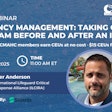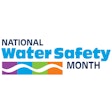
As anyone who’s ever tried to work on pool and spa installations across a wide region can attest, the array of regulations that need to be followed can be maddening. The collection of different legal requirements and other guidelines can force installers to spend nearly as much time combing through law tomes as they do getting equipment into place.
This is a hardship the government relations team of The Association of Pool and Spa Professionals seeks to eliminate, or at least significantly reduce.
“We don’t want a patchwork approach,” explains Jennifer Hatfield, APSP director of government relations.
“When you have more than one set of rules that you’re trying to play by, it makes it really difficult for builders and service companies to do their jobs,” says APSP President and CEO Lawrence Caniglia. “Even with a uniform set of codes, just to build the pool you have to apply for a building permit, and there are already enough variances from county to county and town to town.”
Hatfield and her cohorts spend their time on the front lines of the rulemaking effort, interfacing with government offices at all levels to make sure the unique needs of the pool and spa industry are being addressed with care and insight.
One of the primary activities is helping the process so laws across the country are drafted with some level of uniformity. Recognizing that pool and spa installers are likely to cover broad ranges of territory, APSP wants to provide members the capability of doing their work without the need to drastically change tools or methodologies every time they cross from one place to the next.
RELATED: Promoting Business-Friendly Regulation
Although the government relations team wrestles with a daunting range of topics, much of the current focus is on building codes and regulations related to energy efficiency.
Cracking Codes
Always keeping safety and industry best practices at the forefront of the conversation, the prevailing mission is to assist state and local governments in the shaping of consistent requirements that are clear and easy to follow.
To that end, APSP has had great success encouraging governing bodies to adopt the International Swimming Pool and Spa Code, which the organization developed in conjunction with the International Code Council. Thus far, APSP has helped facilitate more than 20 state adoptions and over 100 local jurisdiction adoptions of the ISPSC.
“We recognize everybody is not necessarily going to adopt that code right away,” Hatfield concedes. “So if a state or a locality is not adopting this code, our next priority is to ensure that, at a minimum, they’re not adopting codes that are inconsistent with the VGBA — the federal Virginia Graeme Baker Act.”
The VGBA has now been the law of the land for 10 years. It dictates that drain covers are designed to significantly reduce suction entrapment incidents. Although the federal requirement technically only applies to public pools, APSP finds it is a strong tool for establishing a broader regulatory baseline due to the fact the VGBA also provides model state guidance for residential pools and spa, regarding not only entrapment prevention but also barrier protection.
Because the VGBA is framed around preserving the safety of those who use pools and spas, it provides a useful guideline for concerned regulators and hopefully keeps them from piling on protective measures that won’t actually deliver any benefits.
RELATED: 8 Years Later: A Look Back at Virginia Graeme Baker
There will always be some municipalities tweaking and putting in slightly more stringent rules on the basis of local needs and preferences, but getting the requirements as level as possible makes a huge difference.
“We don’t ever want to imply that cost is more important than safety, because it’s not at all,” Hatfield insists. “In our industry, safety is the No. 1 priority. But we also don’t think our industry should have higher costs and be burdened with regulations that don’t provide any additional safety.”
It’s almost inevitable that some politicians — at all levels of government — will get antsy about putting fresh ink on the page, leading to the urge to implement regulatory changes with little more purpose than demonstrating there’s governmental action taking place.
Most agencies go through the code-making process every three years, and APSP participates, making sure the codes are consistent and accurate. The organization wants to be certain there’s always a thoroughly tested rationale for any changes to codes.
These standards are helpful to pool and spa installers, but they may be more of a boon for manufacturers. Widespread consistency allows the makers of pool and spa equipment to stick with uniform designs, wherever the finished product might land. As with the installers, less variability meets greater operational efficiency, which in turn translates to lower costs for consumers.
The Energy Equation
“Even beyond our industry, concepts like energy efficiency and conservation aren’t going to go away,” Hatfield says. “So we’re looking ahead and trying to be proactive.”
As opposed to the local and state level concentration of efforts around building codes, establishing uniform energy efficiency standards is best done at the national level.
“California has been the leader and continues to work on energy efficiency requirements,” Hatfield notes. “Arizona followed with a slightly different take, followed by a handful of other states. To combat the piecemeal approach, we’re being proactive and working on one federal requirement.”
The ISPSC already calls for compliance with energy efficiency standards that have been developed: APSP-14 (for portable spas) and APSP-15 (for residential swimming pools and inground spas).
As with the building codes, the driving concern is protecting APSP members from inconsistent requirements.
In the energy efficiency area, the APSP government relations office has a recent success story. APSP spearheaded a collaborative effort between industry figures and conservation activists that led the Department of Energy to set a federal regulation for swimming pool pumps. The Dedicated Purpose Pool Pump rule (DP3) is set to go into effect on July 19, 2021.
Currently, APSP is educating members about the new rule while also helping manufacturers get ready for the shift.
But there’s one more component that needs to be brought in line to preserve that much-sought-after consistency.
RELATED: Energy Efficiency in Pool Building
Because pumps and pump motors can’t be covered by the same rule, APSP is working to develop corresponding revised regulations around pool pump motors. They’re once again bringing multiple concerned constituencies, from inside and outside the industry, to the table.
“Our goal is to have a pump motor rule that goes into effect that same July 19, 2021 date, so there’s consistency on the motor side, as well,” Hatfield says.
Without new rules applied to pump motors, the effectiveness of the DP3 is compromised. Old, energy-gulping pumps can be endlessly repaired with motors that don’t meet the efficiency requirements of new pumps, causing undue harm to pump manufacturers and likely creating dissatisfaction from regulators who see the purpose of the rule thwarted. That could lead to more stringent laws down the line.
California is already considering its own pump motor energy efficiency rules, heightening the value of getting a national standard established.
APSP members have been meeting for several months, and energy advocates are joining the discussion. APSP expects to petition the U.S. Department of Energy this summer. At this point, everyone remains hopeful about hitting the target for the motor rule being implemented at the same time as the pump rule.
APSP has also partnered with the Appliance Standards Awareness Project, working on model energy efficiency appliance legislation.
"We’ve worked with them over the last few years to make sure that when it comes to portable spas, the requirement in legislation is our APSP-14 standard,” Hatfield says. “That model state legislation is being considered in Washington, Massachusetts, Vermont and Rhode island. We’re also working with the California Energy Commission to make sure they adopt language consistent with the APSP-14 standard.”
There are times when the well-meaning attempts of state legislatures to set new energy efficiency standards are so ambitious that the proposed rules exceed any reasonable modern technology, effectively creating a complete barrier to manufacturers. That’s where APSP steps in to help make the necessary adjustments.
“Getting the right standard equates to less cost to the manufacturer of that product,” Hatfield says. “And if it’s less costly for the manufacturer, that in turn means it will be less costly to the pool professionals — our builders, our retail stores, our service professionals. And then that means it’s going to be good for the consumer, as well.”
For the consumer, the benefits of smartly implemented energy efficiency standards extend beyond the initial purchase price. The cost of ownership will also drop as utility bills go down.
The energy efficiency requirements are good for the environment, and they’re also a useful selling point for consumers thinking green, whether from a conservation standpoint or in terms of the dollars they’ll save.
Feedback Loops
APSP staff have several valuable tools that help them stay current on the latest governmental developments, including a tracking service that alerts the organization to local, state and federal actions. Those items could include proposed legislation, regulations or local ordinances that have any connection to the industry. In 2017, the alert system picked up over 2,000 items nationwide.
Once alerts are sent their way, APSP staff reviews every item. Those they believe require additional attention are sent out to the membership via the weekly newsletter. And there are other specialized dispatches targeted at members in individual states.
Ideally, members then provide feedback. They also provide a tremendous service to APSP by often being the first to identify a developing area of concern.
“When something arises at a local, state, or national level that is important to the industry, the membership tells us,” Caniglia says.
Hatfield agrees that APSP members provide critical intel. And they should feel empowered to share what they’re hearing about, even if potential rules and regulations are only in the earliest stages. In fact, the earliest stages might be ideal.
“Earlier involvement typically means a better the outcome for our industry,” Hatfield says, noting the value of APSP addressing a questionable regulatory idea before it becomes too entrenched.
“It doesn’t matter the issue,” she adds. “It could be building codes or energy efficiency issues. It could be people changing lifeguard requirements that affect our pool management companies. It could be drought restrictions. It could be any of the numerous varied things we cover for our industry.”
RELATED: The IHTA of APSP: Fighting Legislation, Seeking Participation
The lines of communication are also open whenever an APSP member could simply use some clarification about the rules landscape.
“One of the advantages to being a part of this association is that any member can reach out — to their local chapter, to their local region or to the local level,” Caniglia says. “Even when there’s a unified code there can still be interpretation needed. We provide that service to our members, and we’re always happy to do it.”
The message is clear: APSP members can rely on the government relations team to do the regulatory research and guidance. That will let members concentrate less on studying up and more on the work that brings in revenue.











































